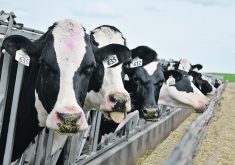Glacier FarmMedia – Livestock producers in the Americas are using fewer antimicrobials for animals, although a new report shows a large increase in Africa.
The report from the World Organization for Animal Health showed total use in animals increased two per cent between 2019 and 2021 after several years of decline.
The increase observed in Africa was 179 per cent, while the Americas reduced animal antimicrobial use by nine per cent, Europe by six per cent and Asia and the Pacific by 0.7 per cent.
Read Also

Canadian Food Inspection Agency extends chronic wasting disease control program consultation deadline
Date extended for consultation period of changes to CWD program
The African increase may seem huge, but the report says it is mostly due to better monitoring and reporting of use. Africa represents about two per cent of total antimicrobial quantities.
Restrictions have been introduced on use of the most important types for humans to treat animals. Cephalosporins and fluoroquinolones are only about 0.6 per cent and three per cent of the total antimicrobials used for animals.
The two most used medications for animal treatment, tetracycline (36 per cent of the total) and penicillin (12.5 per cent), are both on the list of most important types for veterinary use, but are not on the list of critical human antimicrobials.
Tetracycline use increased by 10 per cent, penicillin by 12 per cent and macrolides by 19 per cent across the world.
Use of antimicrobials as animal growth promotants through preventive treatment has been criticized as an area of unnecessary use, but in some areas, such use continues. Seventy-five per cent of growth-promoting antimicrobials are used in the Americas, Asia and the Pacific. Seventy-two per cent of reporting countries say they don’t use them to promote growth.
Two of the three most used antimicrobials to promote growth, tylosin and bacitracin, are also on the list of critical treatments for humans.
The WOAH report says there are hot spots of growth, but 51 out of 81 members reduced their quantities from 2019 to 2021.
It said antimicrobial resistance is expected to result in potential loss of 1.8 years of life expectancy across the world by 2035.
The organization started collecting global statistics on antimicrobial use in animals in 2015.
















